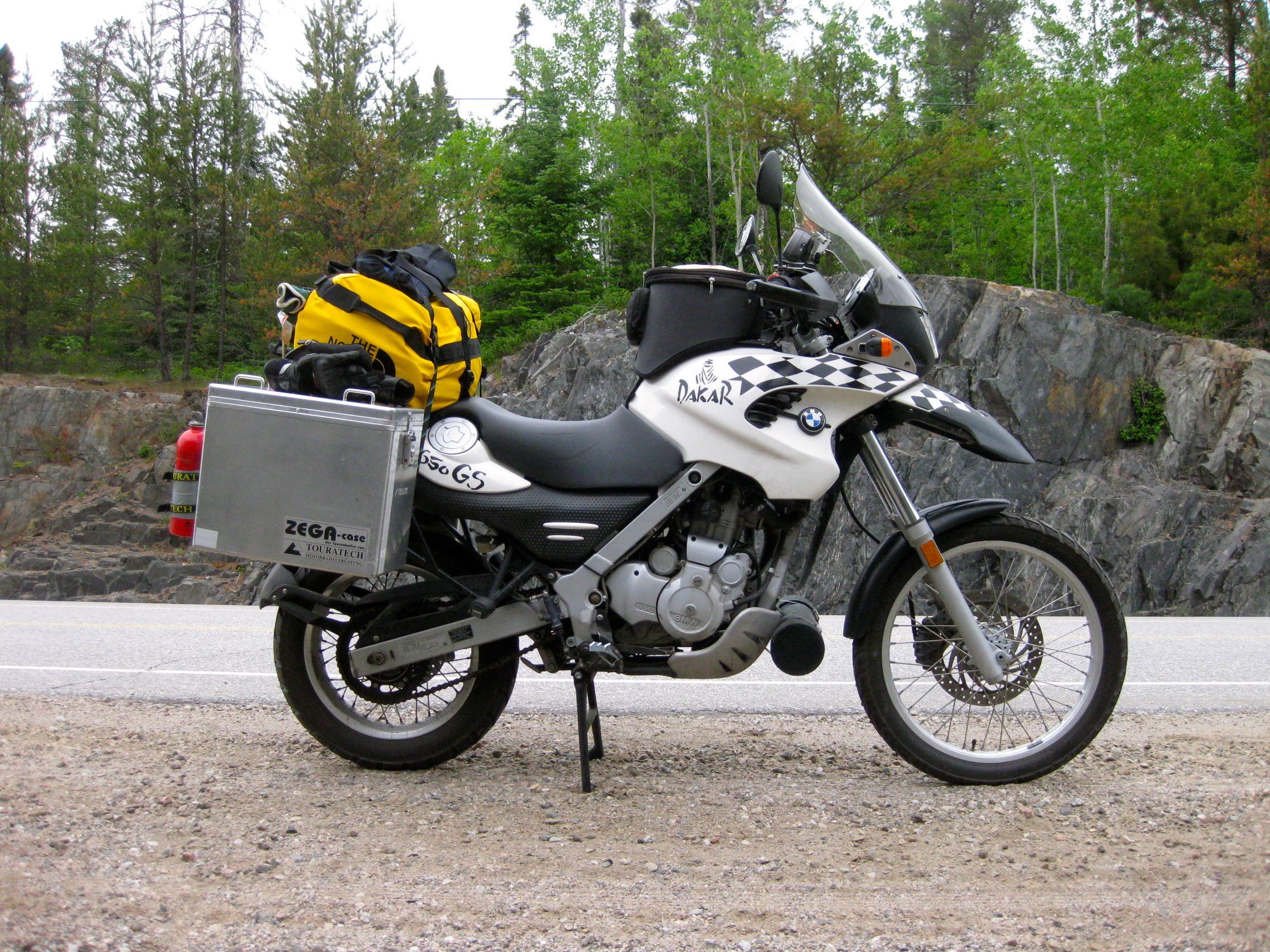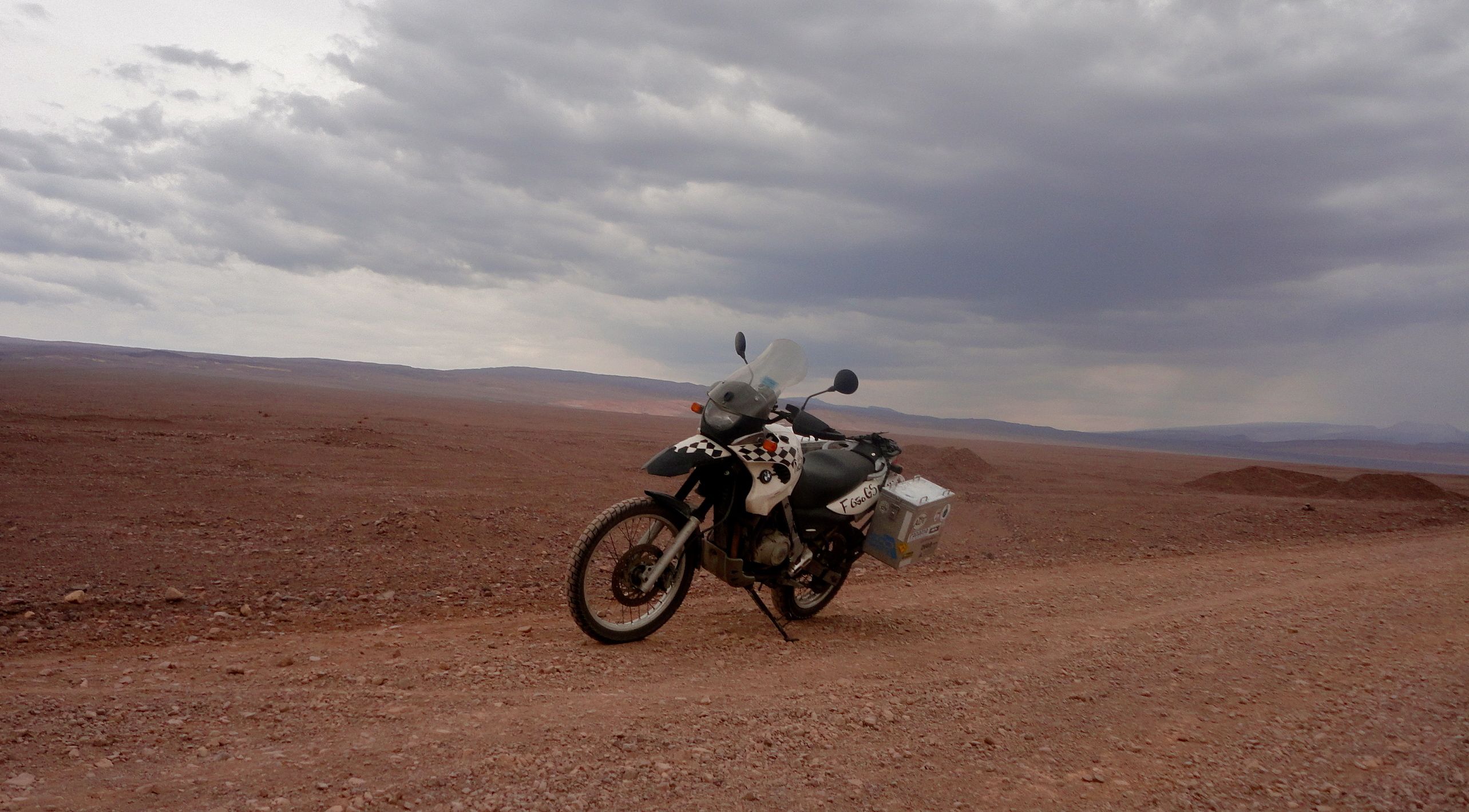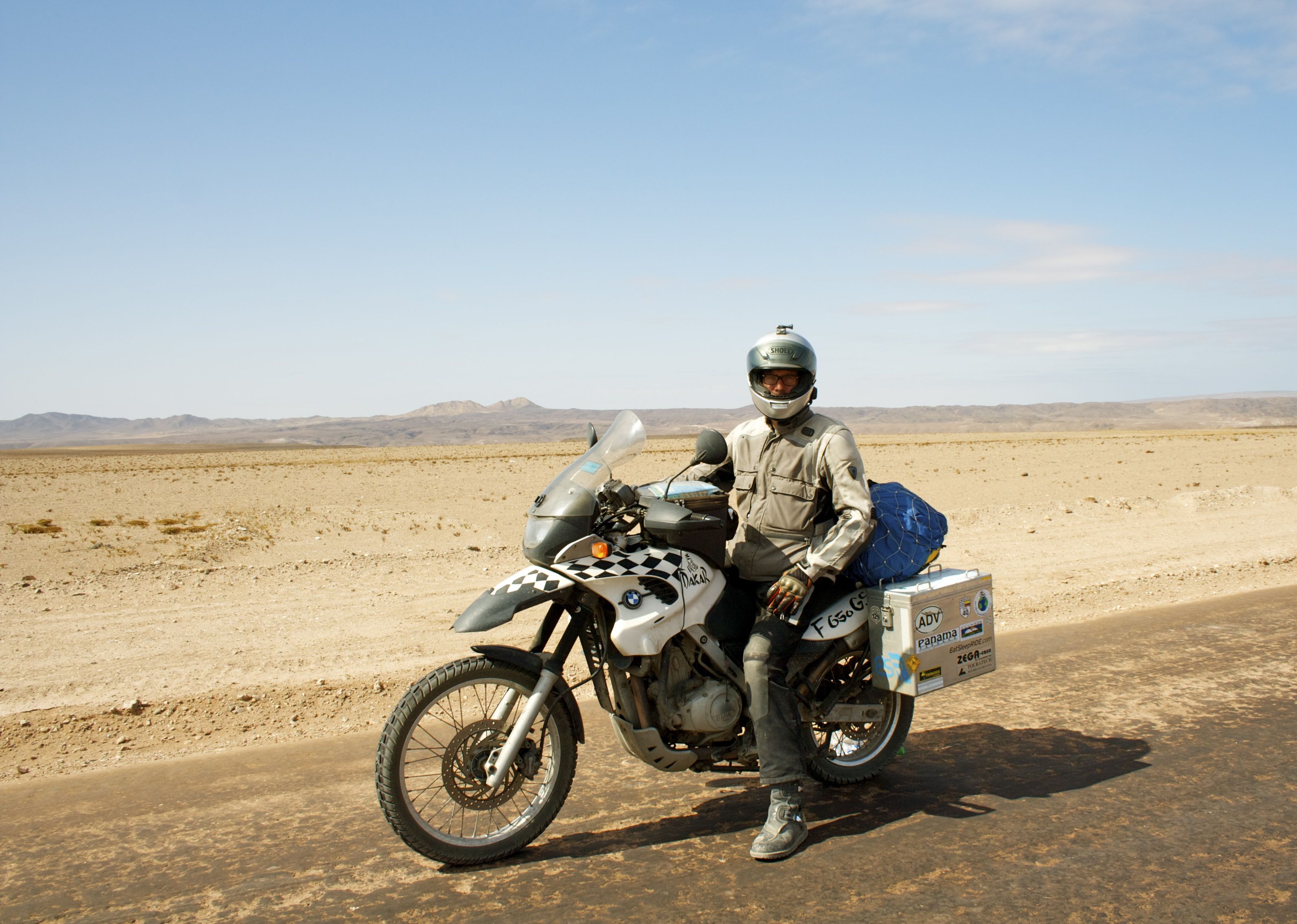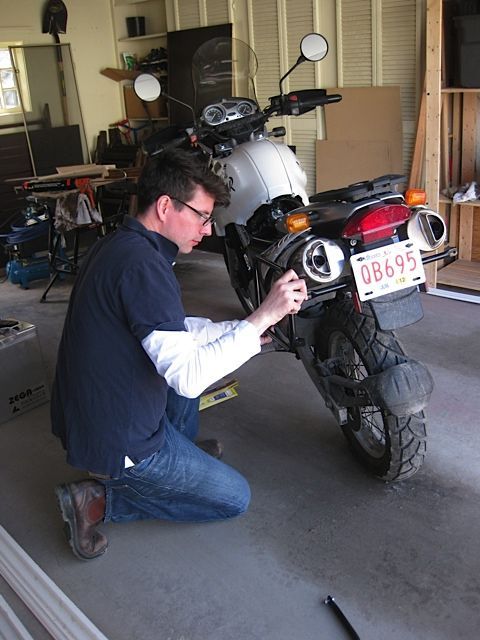Choosing My Overland Travel Bike: The 2000 BMW F650GS Dakar
Choosing the right bike for a year long, 50,000km motorbike trip from Canada to the tip of South America is a pretty daunting task, or at least it can be. There are so many excellent options in the so-called "Adventure Touring" segment to be had, and besides, pretty much any bike will make the journey, from a Honda Cub to a BMW R1200GS Adventure.
Ideally, you'd like a motorbike that will get you there and back in one piece and fall within your travel, price and size requirements. However, this is easier said than done. Any bike is going to be a compromise, do you take one of the big overland bikes like the aforementioned R1200GS or Yamaha Super Tenere and make the roads submit to your will, or something like a KTM 640 Adventure and carve up the dirt like a Dakar star? Or, what about that old street bike that's been collecting dust in one of the dark corners of your garage? Any of these will work just fine and the possibilities are endless.

F650GS Dakar
I've posed the question of which bike to take to dozens of riders over the past couple of years, some of the answers are pretty straight forward, such as take a bike you actually own or, a bike that you feel comfortable on or, the best bike you can afford. Others have been a little more cryptic. For example: since you'll be riding it every day for months on end in all types of weather, be sure take the bike that puts a smile on your face every time you throw a leg over. All of these bits of advice are valuable, however like most things, it is in the way you apply them that matters.
In my case, I had been riding for seven or eight years, mainly on tarmac and the longest motorbike trip I'd ever taken was ten-day tour through the back roads of British Colombia. Although it was a beautiful and memorable trip over fantastic roads cutting through incredible scenery, it was hardly what anyone would refer to as an "adventure". When it came time to start planning for the big trip I did not know what I wanted or needed, a bit of research was required. Unfortunately my research mainly consisted mainly of reading travel blogs and watching Long Way Round, both worthy endeavors in themselves, but they hardly prepared me for what I needed to know about choosing the right bike to ride to el fin del mundo.

The Dakar in the Atacama Desert
I'd worked my way up to BMW R1200GS ownership, as everyone knows, it is a fantastic bike and has transported countless riders across deserts and over mountains the world over. Sadly, even though I did not want to admit it, I knew it was not the right bike for my trip. I had a number of concerns about taking the big BMW. For starters it was far too nice. It was also too heavy and too complicated for me - I had never even changed a tire, let alone have anything to do with a CANBUS system, whatever that is. None of this would have made a difference, such was my love for my bike, but in the end it came down to that lowest of common denominators - money. I kept coming back to the same realization that if I could bring myself to sell the bike sitting in the garage I could either leave sooner or extend the length of the trip by several months. With that in mind, the decision was made to sell the bike. Luckily, there is always a market for a well-kept R1200GS and I had no problems getting a good price for it.

The Dakar in its element
Cash in hand, I started scanning the local and national classifieds. Since my wife, who would be accompanying me on this trip, was riding a 2001 BMW F650GS and had no intension of changing bikes, it was only logical to start looking for something similar. It would allow us to travel at the same pace (at least in theory - Sandra sometimes likes to doddle on gravel), we could bring just one set of tools and spares, and it would allow us to use one of the bikes to trouble shoot if the other broke down. Many of my fellow riders agreed on this strategy, so I set my sites on an F650GS, preferably a Dakar for the higher suspension.
After a few weeks I found what appeared to be the perfect contender, a 2000 F650GS Dakar without ABS. Although it was eleven years old, it looked to be in pretty good condition with a new set of tires and 46,000km on the clock. It was even white, my preferred colour for the Dakar. A few phone calls later the bike was mine, for less than 25% of what I had received for my R1200GS! As I rode it 25kms to my home in Calgary on that cold December evening, I was kept warm with the knowledge that we would be able to extend our trip by months as a result of my keen ability to search out such a deal. Of course that's also when I realized the heated grips no longer worked...
New (to me) bike nicely sequestered in the garage, I went about preparing it for the year long journey that was to follow. eBay and Kijiji became close personal friends during this time, and I was able to pick up most of the items I needed second hand at somewhat reasonable prices. A set of aluminum panniers came from Vancouver, a set of larger foot pegs from a local rider, a used GPS from a motorcycle forum in the U.S… I was nearly set. A new front fender, a centre stand and couple of other odds and sods were purchased from suppliers like Touratech and Twistedthrottle. Before long my Dakar was looking like a real adventurer, albeit a somewhat low budget adventurer, but an adventurer none the less. After a good wash and a fresh service in the spring followed by a couple hundred kilometers of riding around Calgary and it was time to hit the road.

Installing the panniers
It has turned out to be a great choice, and although it may not be the most hardcore of off road machines, it's taken to me to some incredible and difficult to get to places over the past 9 months and 40,000km. It's been a near paragon of reliability, with nary a fault, and it has consistently delivered outstanding fuel economy, which almost justifies the small, 14 liter tank. It supplies all-day comfort in the saddle and has proven itself on some of the best roads North and South America have to offer. It has also been fairly gentle on other consumables like chains, sprockets and tires, which has helped our savings last a few more miles. Replacing the aging suspension with an aftermarket kit would have been a great addition to the overall package however; it just wasn't in the budget.
One minute on the trampoline of death
I've been asked a number of time if I would I take the same bike again. Given the same circumstances (i.e. monetary constraints) the answer would be a resounding yes. The Dakar has served me very well; it is very comfortable, it crashes well, and it is not too heavy to pick up when the inevitable does happen. It's easy to load and it can carry a lot of stuff (perhaps too much as I seem to be carrying more than I should). The counterbalanced, single cylinder engine has been smooth enough and it seems to just go and go, while the fuel injection has made altitude changes a non-issue. It is even fairly easy to service, although I guarantee you will tire of removing the body work, just as I have. Sure, on occasion I've found myself wishing for a more powerful or sporty bike, but for most South American conditions the F650GS's 50hp has proven more than adequate. Most importantly, it's fun to ride.
Off road near Mompox, Colombia
There have been a couple of glitches along the way, I had to buy a new battery about 6 months into my trip, a leaky fork seal announced itself at 38,000 km and there has been some intermittent stalling when the engine is cold that seems to be completely random. One of the more frustrating shortcomings with the Dakar involves the side stand. Even though the suspension of the Dakar is significantly taller than that of the regular F650GS, BMW chose to use the same side stand. This makes the Dakar lean like a drunken sailor clinging on the a wall for dear life, and like that drunken sailor, it tends to fall over a lot because of it. I rode around for a while with a small piece of wood or a rock to put underneath the stand to help reduce the lean angle, but I was always leaving them by the side of the road. The extreme lean angle really made finding just the right parking spot critical, especially when the bike was fully loaded, as it would fall over at the slightest hint of an incline or even in a gentle breeze. Eventually I had someone weld a couple of pieces of square-section metal tubing under the foot of the stand and this has resolved the issue. The side stand now interferes with the SW MoTech center stand I installed, but it's much better than falling over.

Dakar Down!
Given an unlimited budget I'd undoubtedly choose something a little more modern and a bit more powerful, like the BMW F800GS or the Triumph Tiger 800 XC, or perhaps a middle weight from the KTM if I was looking to go a little faster, which I am not. The Yamaha XT660Z Tenere also sparks my interest, but it's not available back home. Of course owning one of the big boys like the KTM 990, the Yamaha Super Tenere or the BMW R1200GS Adventure would be a dream; however they would simply be too much motorcycle for me in South America, and they are well over my budget.

Fuel injection makes 5000m passes a breeze
At the end of the day you've got to take the good with the bad, and for me there is a lot more 'good' to be found in the Dakar than bad. BMW must have realized this as well, as after many years they have re-released the Dakar as the 2012 GG650GS Sertao . As for my Dakar, it may not be the most exciting bike in the world, but it is mine and it is probably the perfect travel bike for me.
Getting through the mud
You must be logged in to comment
Login now